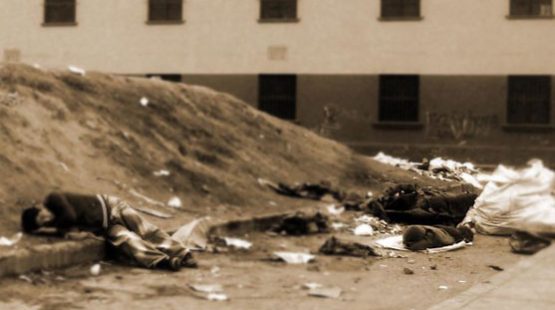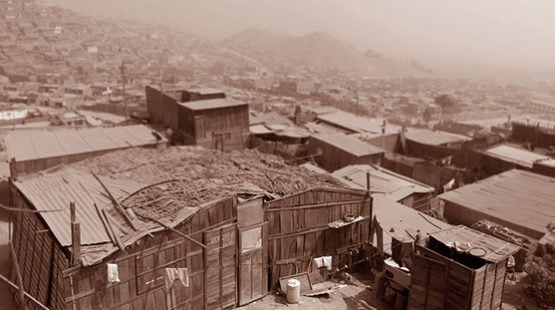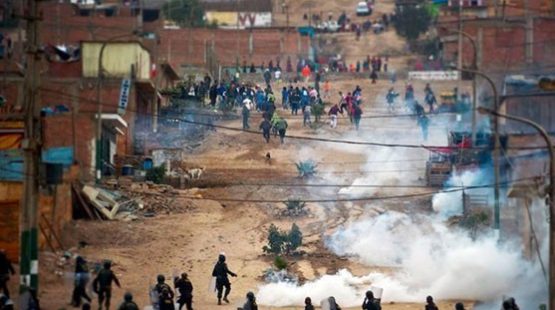Situation in the 1990s
Durante la década de 1990, Perú vivió una de las etapas más difíciles para su población infantil. La pobreza extrema, la crisis económica y social, y la violencia generalizada afectaban profundamente a los niños y adolescentes. Según datos de UNICEF, en esos años, el 14% de la población peruana vivía en condiciones de indigencia, lo que equivalía a 3.5 millones de personas, de las cuales aproximadamente 2 millones eran niños, niñas y adolescentes. During the 1990s, Peru experienced one of the most challenging periods for its child population. Extreme poverty, economic and social crisis, and widespread violence deeply affected children and adolescents. According to UNICEF data, during those years, 14% of the Peruvian population lived in indigence, equivalent to 3.5 million people, of which approximately 2 million were children and adolescents. One of the most alarming aspects was the increase in children living on the streets, especially in Lima. It was estimated that between 1,500 and 2,000 minors were homeless, exposed to crime, drug use, and exploitation. These children, without access to adequate education or health services, were trapped in a cycle of poverty and marginalization.
The main causes of this situation included:
Family Crisis: The dissolution of family structures, domestic violence, and abandonment were common phenomena. Migration and Overcrowding: Internal migration to cities, especially Lima, led to overcrowding in slums, worsening living conditions. Violence and Internal Conflict: Political violence and armed conflict between the state and insurgent groups like the Shining Path had a devastating impact on the most vulnerable communities, particularly affecting children.


Current Situation


Today, although Peru has made significant progress in reducing poverty and protecting children, major challenges remain. According to the National Institute of Statistics and Informatics (INEI), poverty has decreased, but still affects a significant portion of the population, and social disparities remain evident.
Education and Health:
Improvements: The rate of access to primary and secondary education has improved considerably. However, the quality of education remains a challenge, especially in rural areas and among indigenous populations. Health: Health coverage has increased, and infant mortality and malnutrition rates have decreased. Despite these advances, chronic malnutrition still affects a significant percentage of children, particularly in rural areas and indigenous communities.
Persistent Challenges:
Child Labor: Despite efforts to eradicate it, child labor remains a problem, with thousands of children working in precarious conditions, especially in agriculture and domestic work. Violence and Exploitation: Violence against children and adolescents, including sexual exploitation and domestic violence, remains a serious concern. Impact of the Pandemic: The COVID-19 pandemic has exacerbated many of these vulnerabilities, particularly affecting education and increasing the risks of child labor and exploitation
Conclusion
While Peru has made great strides since the 1990s in improving the living conditions of its children, it still faces significant challenges. Poverty, though reduced, remains a serious problem, and inequality disproportionately affects children in marginalized rural and urban communities. Access to basic services such as education and health has improved, but the quality and equity of these services still need attention. The fight against violence and child exploitation remains an urgent priority to ensure that all children in Peru can grow up in a safe and healthy environment. Unfortunately, the Peruvian government does not have the resources to address these problems fully.
Without the help of transparent and serious organizations like CIMA, these children would have no hope. CIMA was founded on the principle of giving hope to children and adolescents who would otherwise be abandoned on the streets, facing terrible consequences.
CIMA is hope for these children and for Peru.

Sources: The Situation of Children in Peru, Both in the 1990s and Today:
- UNICEF: An organization that has extensively documented the situation of children in Latin America and the Caribbean, including reports on the situation of children in Peru during the 1990s and today.
- INEI (National Institute of Statistics and Informatics): Provides statistical data on poverty, education, and health in Peru, including historical and current reports on the situation of children
- INEI – Reports and Publications
- World Bank: Has conducted studies on poverty and inequality in Peru, with specific sections on the situation of children.
- World Bank – Peru
- Ministry of Women and Vulnerable Populations of Peru: Provides reports and studies on the protection of the rights of children and adolescents in Peru.
- MIMP – Peru
